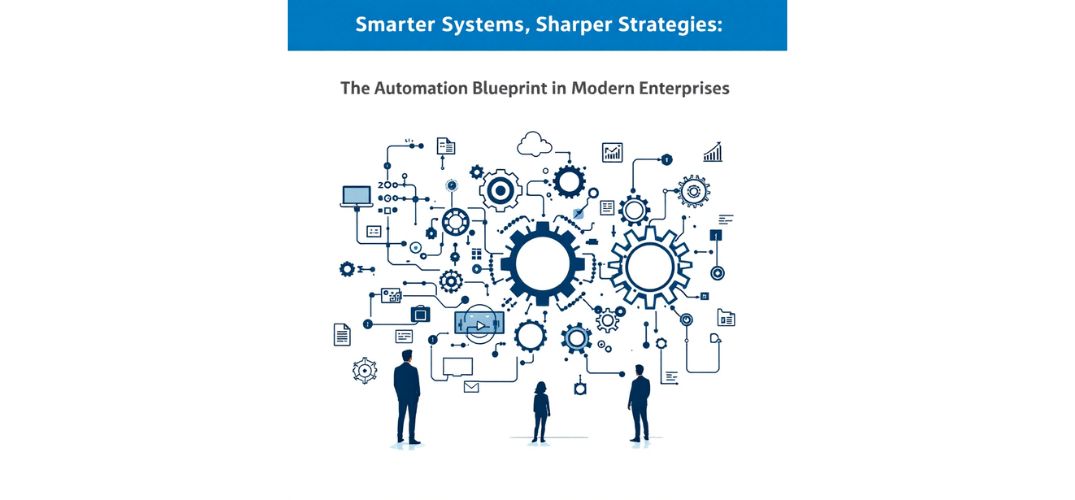In today’s digital era, Alok Singh, a seasoned expert in intelligent systems, delves into the transformative journey of enterprise data automation in his latest publication. With deep expertise in emerging technologies, He examines how modern organizations can elevate performance through innovative automation strategies.
Navigating the Data Tsunami
Organizations are inundated with data flowing in at unprecedented speed and complexity. Traditional data systems, once reliable, now struggle to cope with the scale and variety of information. He outlines this shift as a critical juncture, one that demands not just improved systems, but intelligent, adaptive frameworks capable of integrating diverse sources, ensuring quality, and governing access securely. The pressing need for streamlined automation stems from this overload, as manual processing becomes unsustainable.
From Transition to Transformation
The drive toward automation is not just a technological upgrade, it’s a paradigm shift. Enterprises are no longer satisfied with incremental improvements; they are seeking complete reinvention. He highlights the convergence of cutting-edge tools machine learning, cloud architectures, and distributed computing that form the backbone of this transformation. The goal is to build cohesive data ecosystems that are intelligent, agile, and responsive to dynamic operational demands.
Architecting the Intelligent Workflow
Workflow management has evolved from a static sequence of tasks to an adaptive system of interconnected processes. He illustrates how today’s automation platforms go far beyond simple task automation. These systems integrate across departments and technologies, offering real-time insights, predictive analytics, and autonomous optimization. They function as the nervous system of the enterprise, orchestrating complex operations with minimal human intervention.
AI at the Core of Decision-Making
Artificial intelligence, as he explains, is not merely a supportive technology it is the heart of next-generation data ecosystems. Intelligent systems now have the capacity to understand context, interpret patterns, and evolve in real time. They don’t just process data; they learn from it, adapt to it, and generate novel insights. This cognitive layer enables enterprises to move from reactive analytics to proactive strategic foresight.
Machine Learning: The Engine of Automation
The role of machine learning is particularly crucial in his vision. Algorithms are no longer static; they adapt, recalibrate, and improve autonomously. These models build decision-making frameworks that dynamically adjust to operational needs. As a result, enterprises gain systems that not only execute tasks but optimize them continuously, leading to smarter outcomes and higher resilience.
Integrating for Impact
Technical integration, often the stumbling block for many digital initiatives, is reimagined as a strategic function. He explores methodologies that support seamless data flow across platforms through intelligent messaging and communication systems. These technologies enable real-time data transformation, cross-functional connectivity, and operational consistency, breaking down the silos that often hinder performance.
Sector-Wide Ripples of Change
The impact of automation spans multiple sectors. In manufacturing, it powers predictive maintenance, smart production systems, and adaptive supply chains. In finance, it transforms fraud detection and compliance through real-time analytics and algorithmic modeling. In healthcare, it enables more accurate diagnoses, predictive treatments, and personalized care planning. He notes that each sector adapts automation to its unique needs, forming specialized ecosystems built on shared technological principles.
Rethinking Metrics in the Age of Automation
Traditional performance metrics are yielding to dynamic, data-driven evaluation systems. He highlights a shift from retrospective analysis to real-time optimization. With intelligent systems capable of self-evaluation and continuous learning, businesses can spot inefficiencies, adapt strategies quickly, and improve operations with remarkable speed and precision.
Charting the Path Forward
According to him, what lies ahead is not just more automation but truly autonomous systems. Technologies like quantum and edge computing will radically redefine scalability, intelligence, and speed. Future systems will reconfigure themselves, anticipate disruptions, and act with contextual awareness and ethical insight, making automation central to enterprise innovation strategy.
In conclusion, As organizations stand on the brink of a new technological frontier, the integration of AI-driven automation presents not just a competitive edge but a strategic imperative. Alok Singh’s exploration underscores that the future of organizational success will belong to those who embrace automation as a living, adaptive infrastructure. His insights pave the way for a future where technology doesn’t just support decisions it makes them, intelligently.





























